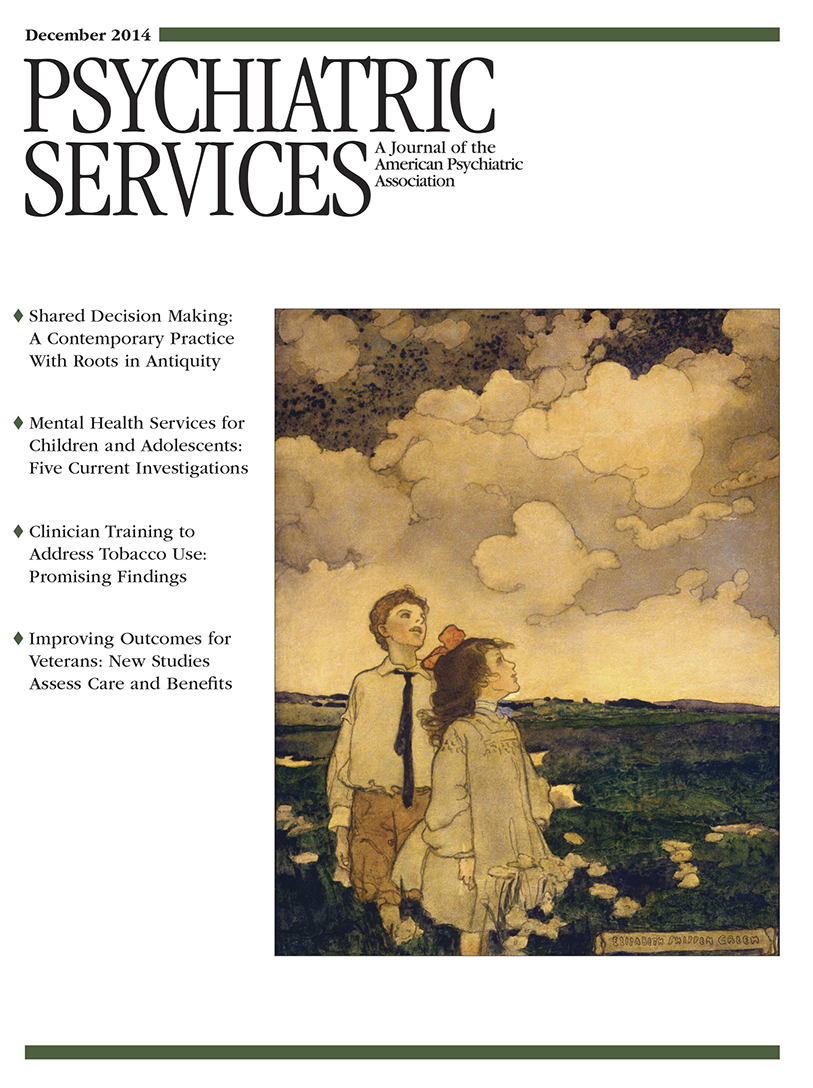Social Inequalities and Antidepressant Use in Canada and France: In Reply
We thank Dr. Lesage and his colleagues for their interesting and pertinent discussion. We think it useful to provide further details on the French National Health Insurance Fund (NHIF). The NHIF reimburses roughly 65% of overall individual prescription medications costs; the remaining 35% is patient copayments. Although many people have supplementary insurance to cover most of the copayment costs, this obviously creates an income-based obstacle to care (1). For this reason, the government introduced the CMUC in 2000, which exempts very low-income people from any copayments for a standard market basket of medical services.
Even with the introduction of the CMUC, we found that CMUC beneficiaries were at increased risk of antidepressant discontinuation. Lesage and colleagues state that in one of their studies in Quebec, they found, to the contrary, that cost-sharing exemptions for low-income individuals were not associated with social inequalities in antidepressant use (2). It was not entirely clear to us, however, whether the dependent variable in that study was antidepressant treatment initiation or discontinuation or both. We note that we previously found that CMUC status was not associated with the overall probability of new antidepressant treatment but was associated with a lower probability of newly initiated long-term treatment (3). Moreover, Lesage and colleagues’ measurement of socioeconomic status at an aggregated geographical level makes it difficult to draw conclusions at the individual level and thus to compare their results with ours.
To explain why the discontinuation rate was higher for CMUC beneficiaries than for others, Lesage and colleagues suggest that some pharmacists may have refused to dispense medication to these patients because of delays in reimbursement of pharmacists by the NHIF. Although this explanation cannot be excluded, pharmacist refusal was probably very rare because in 2008–2009 nearly 100% of pharmacists in France were paid directly by the NHIF regardless of the patient’s CMUC status.
Lesage and colleagues thoughtfully note a French report mentioning that some physicians refuse to see CMUC patients (4). It is true that in France most patients pay physicians for the consultation directly and are reimbursed afterwards by the NHIF (and their supplementary insurance, if any), whereas physicians must await direct payment by the NHIF for their CMUC patients (5). This would not explain our results, however, because we adjusted our analyses for the number of visits each beneficiary had with private general practitioners and psychiatrists.
Finally, we acknowledge that the absence from the French NHIF databases of information on the actual duration of treatment and on the prescribed dose prevents an accurate calculation of discontinuation. As noted by Lesage and colleagues, misclassification may have occurred. However, we conducted sensitivity analyses using both less and more stringent definitions of discontinuation and found similar associations between CMUC status and the risk of discontinuation. Moreover, the percentage of individuals with only one reimbursement for an antidepressant (that is, one month or less of treatment because prescriptions are dispensed in France for a maximum of 28 days) was also rather high (44.7%) and is in line with previous French studies.
1 : Complementary health insurance in France. Who pays? Why? Who will suffer from public disengagement? Health Policy 81:166–182, 2007Crossref, Medline, Google Scholar
2 : Health inequities in mood disorders based on material and social deprivation in dwelling sectors [in French] Canadian Journal of Psychiatry 57:772–781, 2012Crossref, Medline, Google Scholar
3 : Social inequalities in new antidepressant treatment: a study at the individual and neighborhood levels. Annals of Epidemiology 23:99–105, 2013Crossref, Medline, Google Scholar
4 : Health care refusal against CMUC beneficiaries: a single-blind study among a representative sample of physicians (Paris-based GPs, gynecologists, ophthalmologists, radiologists and dentists) [in French]. Paris, Institut de Recherche et Documentation en Economie de la Santé, 2009. Available at www.cmu.fr/fichier-utilisateur/fichiers/refus_soins_testing2009_rapport.pdfGoogle Scholar
5 : Report on the third-party payer system for ambulatory medical care [in French]. Paris, Inspection Générale des Affaires Sociales, 2013. Available at www.igas.gouv.fr/IMG/pdf/RM2013-143P_Tiers_payant_DEF.pdfGoogle Scholar



